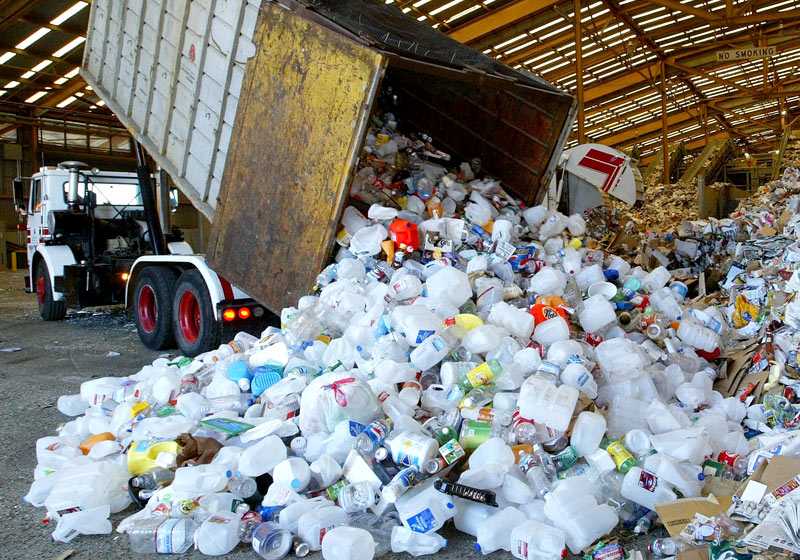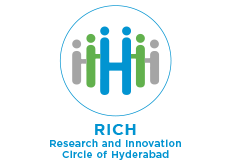Recycling of Plastics : An Analysis

Source : The Guardian
Introduction
Enough airtime and print real estate has been devoted to the impact of plastics on the environment and the health and so on and so forth. A lot of effort is going into figuring out the science behind developing better plastics and better processes to recycle or recommission different kind of plastics more effectively and efficiently.
While this is absolutely critical and irreplaceable, both these approaches target two ends of the value chain – the entry point of manufacturing plastic feedstock and the exit where there is plastic that is ready for recycling. However, there is a large amount of plastic that is already floating around (literally and figuratively) in the environment due to the non-viability of recycling this plastic owing to design related issues. There is a strong case to be made for bringing product designers into this conversation at the earliest and this article tries to answer some of the “why” questions behind this.
Scale of the problem
The current global production of plastic is about 300mn tonnes and only about 8-14% of this gets recycled depending on the application that it was used in, due to the unfavourable (direct) economics of recycling. Typical calculations of the cost of recycling fail to include the indirect costs such as the cost of environ-mental damage and the health costs due to the toxicity of certain commonly used plastics.
In somewhat more graphic terms, the plastics industry consumes about 6% of global oil production which is as much as the consumption of global aviation industry. At the current rate of usage, by 2050, this number is expected to go up to 20%. Similarly, the plastics industry is expected to consume 15% of the global Carbon budget (to keep global temperature rise below 2deg C) by 2050.
Of all the plastic produced, given the 8-14% recycling rate mentioned earlier, the amount that leaks out of the system and enters the oceans is likely to outweigh all the fish in the ocean by 2050. This would have cascading negative effects on the productivity of these ecosystems (land and water) and food availability. It is estimated that if we can exploit plastic recycling to its full potential, we could recover between 80-120bn USD in value every year but this would only happen if we rein in the costs. Redesigning everyday products to make them more recycling friendly would be a great place to start, bringing down the complexity and cost of recycling equipment and processes.
Costs of recycling
On the supply side, the costs are of two kinds. The first, and the harder problem to solve, is the cost of the process of recyclingitself (after the initial preparation of raw materials). The second, somewhat easier problem to solve, is the cost of preparing the raw plastics prior to processing. However, the catch here is that for the cost of raw material preparation to come down, the products that commonly use plastics need to be fundamentally redesigned keeping a few recycling-driven design criteria in mind.
On the demand side, the economics are driven by the premium that a user has to pay for recycled plastic over plastic produced from virgin feedstock due to the market forces of the fossil-fuel economy as well as the plastic monomer industry.
Thus, the technological interventions to improve the recycling uptake are also discussed from these two angles – reducing the cost of processing and reducing the cost of raw material preparation.
Types of recycling
Typical recycling processes can be classified into three types :
Mechanical recycling
Closed loop recycling
In this form of recycling, when the plastic is shredded, the polymer chains are not broken down. Also, the quality and the characteristics of the original polymer are not lost so the recycled plastic can go back into similar applications as the original plastic. The loss in value is the least in this form of recycling. Also, when pushed back into the same application after recycling as before, the num-ber of usable cycles goes up drastically making this the ideal scenario
Open loop recycling
In this form of recycling, the polymer chains are again not broken down but the quality of the plastic degrades. As a result, the recycled plastic is usable only in an application that makes fewer demands on the plastic used. Due to the loss in value at each stage, the number of times that the plastic can be recycled is limited and is ultimately rendered unviable to recycle.
Chemical recycling
Here, the plastic polymer is broken down into individual monomers or other building blocks that can be used as a chemical starting point in the manufacture of plastics. The quality of the monomers thus pro-duced are almost as good as that of virgin feedstock but the costs can be prohibitive.
Pyrolysis
Here, the focus is on energy recovery rather than material recovery as the plastic is reduced in the absence of oxygen to produce a crude oil of sorts.The end-product is a wax or a similar hydrocarbon that requires significant purification before usage.
In an Indian context, the economics also encourage direct burning of plastic as a fuel instead of coal.
Traditional Value chain
To be able to locate the problems leading to low recycling uptake, we look at the typical value chain of the plastics industry from production to end-of-life.
Of the input feedstock, about 90% is made up of virgin feedstock from fossil sources. About 9% comes from recycled sources and about 1-2% is from biological sources. These percentages vary based on the particular application sub-industry being studied, say, packaging, but the numbers remain broadly in the same ballpark for all sub-industries.
After processing and usage, about 14% is incinerated for energy recovery (as fuel), about 40% enters landfills and 32% leaks out of the system unaccounted for to litter the environment on land and in the oceans. Only about 14% is recycled. Of this about 2% goes into closed loop recycling that feeds back into the input feedstock, 8% goes into open loop recycling, while 4% ends up as the processing loss.
Generic challenges in recycling
Generic challenges in recycling that are applicable mostly independent of type of plastic, etc. can be segregated into supply-side (used plastics) and demand-side (recycled plastics) factors.
Supply-side factors
The supply-side factors are further divided into two types, the first type are the design-related factors and the second type are the use-case related factors
Design factors
Small format
Small plastic pieces such as labels, lids, etc. that are below 40-70mm in size can typically not be processed by industrial recycling equipment and end up leaking into the environment. These make up 10% of the non-recyclable plastics.
Solution :Redesigning containers, etc.
Impact : Recovery of 50-70USD/ton
Multi-material pieces
Components made of multiple materials fused together for functional or for aesthetic reasons cannot be easily recycled due to the formation of non-mixing phases which weaken the recycled material
Solution : Choosing appropriate mono-materials to replace the multi-material
Impact :25-40USD/ton
Thus, the net value that can be recovered by redesigning plastic parts while including recycling-based de-sign constraints can drop the cost of recycled feedstock by 95-140USD/ton from the original recycling cost of 170-250USD/ton.
Use-case factors
A significant percentage of packaging plastics end up being single-use plastics. Close to 32% of this ends up leaking into the environment. The most effective way of dealing with this has been to ban the use of single-use carry bags. The impact has been to reduce feedstock usage by about 2mn tons/ year and generate economic value of USD900bn/ year.
Demand-side factors
Recycled plastic feedstock has to compete unsuccessfully with virgin feedstock for various reasons as listed below :
1. Global oil prices have dropped significantly over the last year driving down virgin plastic cost.
2. Oversupply of virgin raw material entering developed economiesdue to a sudden growth in facto-ries in Asia producing raw materials as well as the low labour cost in these countries also drives down the cost of virginfeedstock.
TechnologicalIntervention
Aligned with the previous discussion, the technological interventions can be classified into process-related technological interventions (including workarounds to get over design-related challenges) and logistics and supply-chain related interventions to improve takeup efficiency.
Process Technologyintervention 1. Additive removal to improve purity of recycling raw material making certain recycling processes more effective and efficient as additives that would otherwise contaminate the raw material are removed.
Example : APK, a German recycler, has a technology that removes some additives such as starch and a part of colour pigments
Stage : Lab stage
2. Reversible adhesive to separate multi-material componentsbefore recycling starts resulting in higher quality recycled material.
Example :Saperatec, Germany uses a chemical bath to separate plastics and aluminium
Stage : Concept
3. Developing super-polymers for functional and recycling superiority
Stage : Concept
4. Refinement of depolymerization techniques to reduce the polymer to monomer feedstock to im-prove yield and quality of chemical recycling
Stage : Lab stage
Challenge : High operational cost
5. Developing automated sorting technologies to separate different types of plastics at source – chemical marker based sorting and near-IR-based optical sorting
Stage (Near-IR) : Fragmented adoption
Challenge : High capital cost
6. Developing environmentally benign plastics to mitigate leakage damage
Stage : Lab stage
7. Converting greenhouse gases to plastics/ feedstock
Example :Newlight’sAirCarbon technology converts Methane to PHA and is cost-competitive with virgin feedstock-based
manufacturing; Bayer Material Sciences is working on technology to convert CO2 to Polyurethane.
Stage : Pilot stage; cost-competitive compared to virgin feedstock
8. Bio-based polymer technologies
Polymers made starting from biological materials take the pressure off conventional fossil-fuel re-sources. Biodegradable or compostable plastics help to reduce the downstream impact.
Stage : Limited adoption
Challenge :Relative lack of economies of scale and having to compete with efficient supply chains for conventional plastics.
9. Pyrolysis-related interventions
These could be of two types – shifting the focus to material recovery from energy recovery, and improving thermal energy conversion efficiency
Example :Recycling Technologies produces Plaxx, a purified oil/ wax, that is left behind after burn-ing the plastic waste; Enval employs microwave pyrolysis to improve yield of the process
1. Developing standardised, modular, recyclable containers to improve reusability (for packaging in-dustry)
2. Pooling plastic assets such as the above containers and pallets across companies using an open network
3. Building IT infrastructure for asset tracking
4. Building aggregator platforms to match supply of used plastics and demand for recycling facilities/ processes
Example ; US Materials Marketplace; Scottish Materials Brokerage Service
Other startups / companies working in the sector
1. Agylix, USA :Converting expanded polystyrene into liquid molecules to be sold to refiner, or crude oil, if market forces allow it.
Challenge :Decreasing supply - Polystyrene is losing favour as a food packaging material; Dropping oil prices make conversion to crude oil unviable
2. BioCellection, USA :Using genetic engineering of bacteria to convert LDPE to emulsifiers, etc.
Challenge : Bacteria are unable to handle contaminants
3. Cadel Deinking, Spain :Ink/ pigment removal using solvent-free chemical bath
Challenge : The technology can handle printed ink but not injected pigments so only plastics with printed material are accepted
References
1. https://www.theguardian.com/sustainable-business/2017/feb/22/plastics-recycling-trash-chemicals-styrofoam-packaging
2. http://www.bbc.com/news/business-42973529
3. https://www.scientificamerican.com/article/is-plastic-from-plants-good-for-the-environment-or-bad/
4. http://theconversation.com/how-plastics-made-from-plants-could-be-the-answer-to-the-worlds-waste-problem-89475
5. https://www.huffingtonpost.com/tom-szaky/bioplastics-and-the-truth_b_8954844.html
6. http://www.recyclingtoday.com/article/the-economics-of-pet-recycling/
7. “The new plastics economy : Catalysing Action”, World Economic Forum, January 2017
8. “The New Plastics Economy — Rethinking the future of plastics”, World Economic Forum, Ellen MacArthur Foundation and McKinsey & Company, (2016, http://www.ellenmacarthurfoundation.org/publications).





